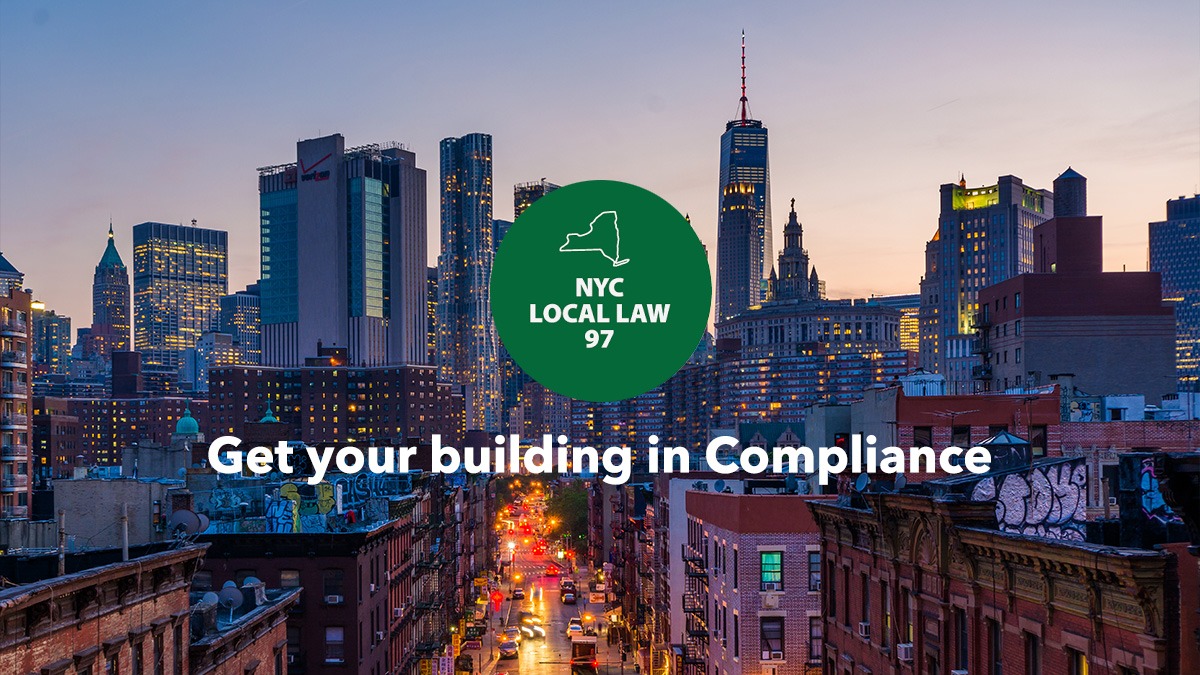
In the bustling streets of New York City where buildings dominate the landscape and skyscrapers live up to their name, there’s a silent but significant contributor to the carbon footprint of this sprawling metropolis.
First Things First: What Is Local Law 97?
Around 80% of the city’s carbon emissions originate from the heating and cooling systems found in both commercial and large residential buildings. The problem isn’t necessarily new, but action to combat it is. Enter Local Law 97, a groundbreaking initiative to curb these emissions and steer the city towards a greener, more sustainable future.
Enacted as part of the Climate Mobilization Act in April 2019, LL97 represents one of the most ambitious plans for reducing emissions to date. Its primary target? Buildings exceeding 25,000 square feet, which collectively account for a substantial portion of the city’s greenhouse gas emissions. The law sets strict emission limits, including reducing emissions from these large buildings by 40% by 2030 and achieving Net-Zero emissions by 2050. Approximately 40,000 NYC buildings are covered under LL97.
Heat Pumps: The Sustainable Solution
Complying with LL97 is no small feat for building owners and managers. It requires a thorough assessment of existing heating and cooling systems and implementing energy-efficient solutions for commercial buildings that meet the law’s stringent emission standards. That’s where heat pumps come into play.
Heat pumps have steadily gained traction as an environmentally-friendly alternative to traditional HVAC systems, and for a good reason. These systems work by transferring heat between indoor and outdoor environments, providing both heating and cooling capabilities with remarkable energy efficiency. Unlike conventional heating systems that rely on burning fossil fuels, heat pumps harness energy from the air, ground, or water, making them a cleaner and more sustainable option.
Not All Refrigerants Are Created Equal
When considering their environmental impact of using a heat pump, it’s important to note that not every heat pump is the same. For example, the type of refrigerant it employs plays a pivotal role in this distinction. One such type, R744, offers a number of advantages over traditional refrigerants, including low environmental impact, high energy efficiency and wide working temperature range.
R744 (supercritical CO2) is a natural refrigerant found in the earth’s atmosphere. It’s essentially a colorless, odorless and tasteless gas that’s also non-flammable and non-toxic. It has a global warming potential (GWP) of 1, which is much lower than traditional refrigerants, many of which are becoming obsolete or even outlawed such as R134a or R410a.
The Smart Choice For LL97
By choosing the right commercial heat pump, building owners and managers alike can meet the emission standards set forth by LL97 and enjoy the benefits of reduced operating costs and minimized environmental impact. With deadlines looming, now is the time to make the switch to sustainable HVAC solutions.
LL97 represents a significant step forward in New York City’s journey toward sustainability, and heat pumps are poised to play a vital role in achieving ambitious environmental goals—not just in New York, but eventually the rest of the country and beyond.
Dalrada is committed to offering solutions that meet the requirements of Local Law 97 and contribute to a greener, more sustainable New York City. Our range of heat pumps designed for commercial and industrial purposes use R744 refrigerant, providing an efficient and eco-friendly solution for large buildings that need reduce their carbon footprint.
For more information about our commercial or residential heat pumps, feel free to contact us today.



